These days, the word “zoo” doesn't exactly conjure up positive images in my mind. I picture big cats in tiny cages; animals that would much rather be wild confined in tanks and behind thick layers of glass.
In many cases, zoos are sad places when you think about them.
Of course, not all zoos are bad, though. Like my friend Alex concluded recently, zoos that focus on the importance of conservation and education are actually really important to making sure that endangered and threatened species have a future to look forward to. Think about it — when was the last time you visited a zoo and DIDN'T learn something new or fall in love with a different animal?
Zoos, in some cases, implement vital breeding programs, support and fund research, and offer up programs to educate people (especially the tiny, school-aged ones) about the importance of things like preserving the environment.
But I'm still often apprehensive about visiting a new zoo. I worry that it won't be one of the “good” ones.
Thankfully, going to the BC Wildlife Park in Kamloops, British Columbia, was a very positive zoo experience.
Actually, “zoo” is not the right word to describe this wildlife park. It's NOT a zoo in the traditional sense. Founded in 1965, the BC Wildlife Park is better described as a conservation and rehabilitation center, focusing solely on species that call British Columbia home.
I was lucky enough to have a special behind-the-scenes visit to the BC Wildlife Park as part of my leg of the Great Coast Road Trip. Over the course of about an hour and a half, road trip buddy Stephanie and I got a unique perspective on the park and what it seeks to do for the animals it cares for.
Our first stop of the morning was to see Clover, a rare Kermode bear that has called the BC Wildlife Park home for nearly 1.5 years. These “blonde” bears are actually a subspecies of black bear in British Columbia, and are known to the First Nations people as “Spirit Bears.”
Clover was orphaned at a young age, and then began bothering people for food (who of course fed him because he's freaking adorable). This, unfortunately, is not safe for any of the parties involved. And, while Clover's transition into captivity has been slightly controversial (no other Spirit Bears exist in captivity anywhere in the world), attempts to “rehabilitate” him (AKA get him to leave people alone) failed; he was relocated twice in the wild and simply would not stay away from humans. So now the park is his home.
Clover's present enclosure is quite small and the bear is quite shy, but the park is working to change both those things. They are currently raising money to build Clover a large enclosure at the park, and they also allow special visitors like us to see him to hopefully get him used to being around people. We got to see Clover “fishing” in his pond and foraging for fruit for about 5 minutes before a rumbling golf cart scared him back into hiding.
We both felt very lucky to have been able to “meet” him, however!
After seeing the Spirit Bear, we headed over to the Highland Valley Copper Amphitheater for a first run-through of the park's summer Bird of Prey flight demonstration. It was a comical show, as many of the (still quite wild) birds showed no interest in flying anywhere on cue. Gontran the overweight turkey vulture was particularly hilarious, waddling off around the corner when he'd had enough flying.
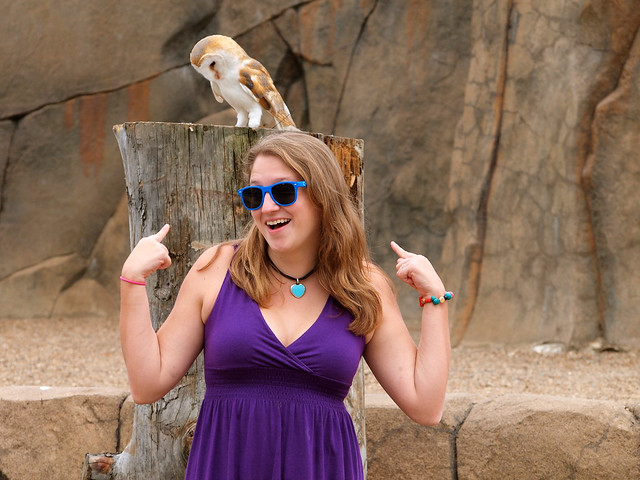
We had a chance to chat with our guide, John, here, and learn more about the park. The BC Wildlife Park is governed by a volunteer board of directors, has a highly regarded breeding program for burrowing owls, has an on-site animal hospital, and its motto is “Conservation through Education.”
“We are a rehabilitation center first and foremost,” John said. “We don't buy animals.”
Meaning that when an animal is able to be re-released into the wild, or if an older park resident dies, the park doesn't “replace” them. Nearly all of the animals currently found at the BC Wildlife Park have been rescued from one situation or another. The ones that stay at the park are those that would not survive on their own again in the wild.
A lot of zoos make similar claims, however — making pledges to conservation and education is not unique to this wildlife park.
But, touring the park with John, I was convinced that this zoo actually MEANS it.
We spent the rest of our time at the park shadowing animal handler Danielle as she made her daily feeding rounds. We watched her interact with two older grey wolves, and observed as she hid food in Bloom the badger's enclosure. One thing Danielle stressed is the fact that none of the animals at the BC Wildlife Park are fed out of bowls — they have to work to find their food, just like their wild counterparts.
In the badger enclosure, Danielle buried food in Bloom's older dens. Earlier, we had watched Clover “hunt” a dead fish that Danielle had hidden in his pond. She also explained how she puts food for the bears up in trees, and sometimes puts meat on a line for the big cats to make them stalk it like they would in the wild.
By the time we were at the grizzly bear enclosure, Danielle had shown us how she uses food-motivated training to train even the largest animals in the park to show her their paws and teeth so she can keep an eye out for any injuries.
Feeding Dawson and Knute — grizzly siblings that came to the park as very young cubs after their mother was killed — through the fence like we did was a lot of fun, but Danielle pointed out that it's not done just to entertain the tourists.
And that's the part worth mentioning again — this “zoo” first and foremost cares for its animals. The entertainment of the tourists is secondary.
For example, Clover the Spirit Bear is not yet on display to the general public. Even though he is a rare bear (in fact, the ONLY Kermode bear currently in captivity), the park is not trying to exploit him for money. I commend them for this — plenty of other zoos would have had him front and center from Day 1.
By the time we bid John and all the animals farewell, I felt really good about our visit to the BC Wildlife Park, and was actually really excited about sharing the experience with all of you.
It just goes to prove that not all zoos are bad. Some, like this one, are actually doing incredible work.
——
What's your take on zoos and wildlife parks?
*Disclaimer: This trip was sponsored by Coast Hotels (and Zipcar), though I was technically just the +1 and was not obligated to write a thing about it. All opinions are completely my own.

Amanda Williams is the award-winning blogger behind A Dangerous Business Travel Blog. She has traveled to more than 60 countries on 6 continents from her home base in Ohio, specializing in experiential and thoughtful travel through the US, Europe, and rest of the world. Amanda only shares tips based on her personal experiences and places she's actually traveled!

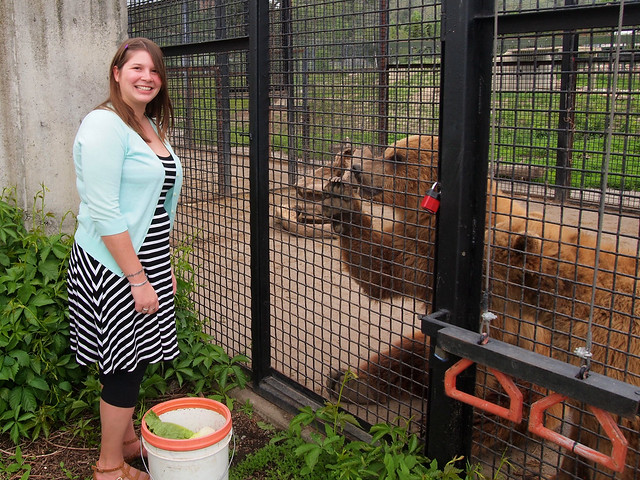

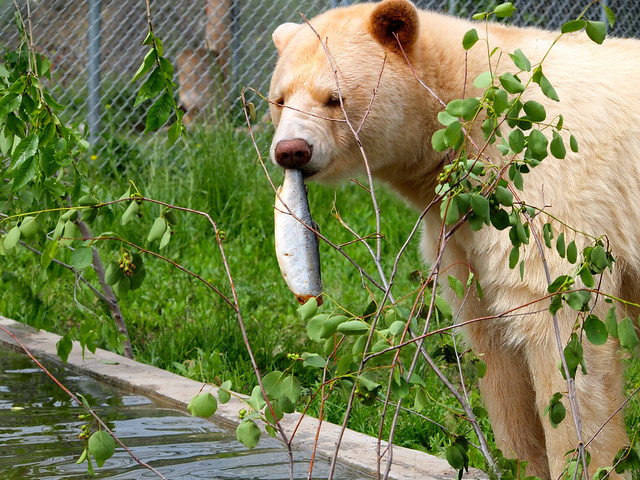
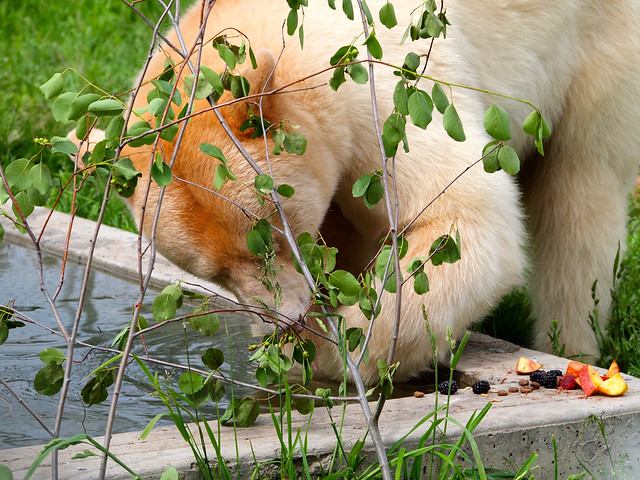
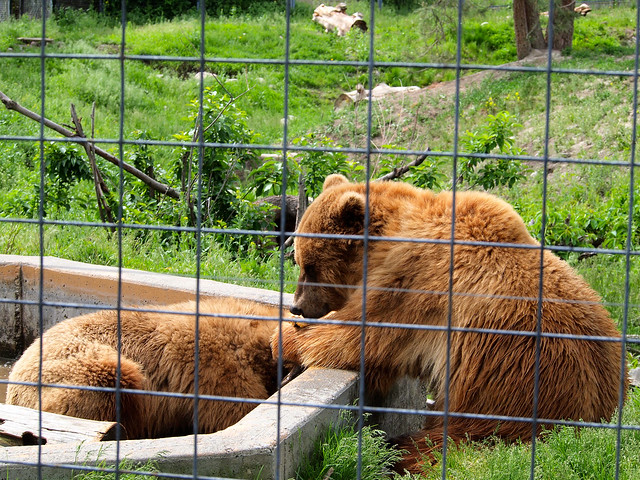
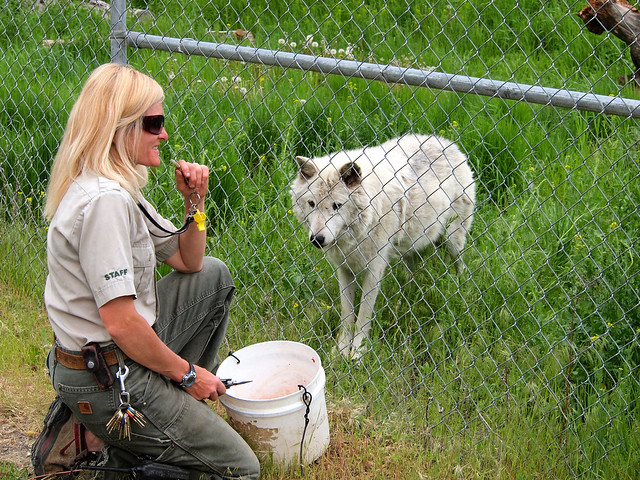
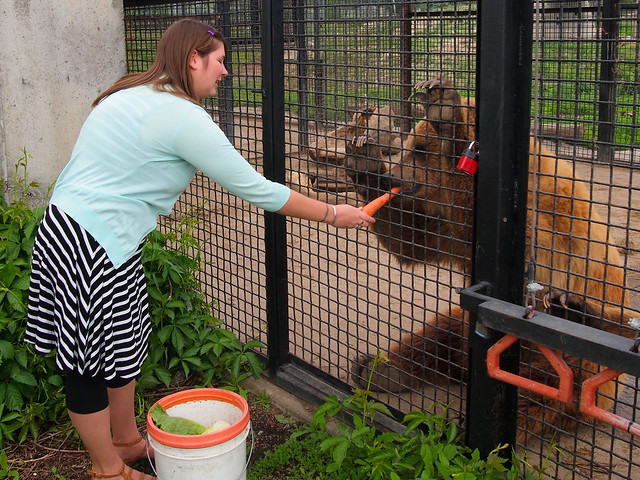









It all looks good from the outside, but if you look at the politics of these ‘educational’ facilities you might not be quite as enthusiastic. Clover has been in Kamloops for several years now, and I think you should check back in another few years and see if the larger enclosure actually comes into fruition. It brings to mind another ‘educational’ facility, on Grouse Mountain in North Vancouver, that received a couple of grizzly cubs more than 15 years ago, promising to build a larger facility…it hasn’t happened yet. No doubt the Kamloops employees are wonderful and truly caring people; and, a few aspects of the work in the facility may be valuable. However, had Clover been an ordinary black bear, he would have been dead; a Spirit bear draws a crowd. Never forget, in our society money remains a primary motivator and it can purchase a lot of clever PR and advertising. Bottom line is that modern technology can provide better educational value than ever before and certainly better education than zoos. In zoos, you can merely observe how animals behave in captivity, through videos and live camera streaming, you can observe how animals behave in the wild.
You definitely make a good point, and I agree that it’s sad that Clover has been in Kamloops for so long without a larger enclosure. BUT, the fact that the park isn’t putting him on display (therefore making money off him), I feel like their intentions are at least in the right place.
He wasn’t kept alive to bring money to the park but because no one felt good about destroying such a rare animal. And the city of Kamloops, along with various sponsors and school children, have spent thousands and thousands building him a facility that is over 3 acres in size and heavily treed to resemble his natural habitat. He has been there for just over 2 years and the public hasn’t seen him yet because he hasn’t been ready. His well being is more important than any tourist revenue. There are NO purchased animals in this park, and all that remain in the park are those that have either imprinted on humans because the were too young when they were rescued, or have injuries that make survival in the wild unlikely.
Yup, after going behind the scenes at the park, I have no doubts that the animals’ best interests are definitely the main focus.
Yes, this place looks amazing. And, awmagod! look at the bears 🙂 so cuuute 🙂
Pretty adorable bears, right??
I’d say animal welfare and safety should be the priority of any zoo. If they could imitate to the fullest extent possible, the natural habitat of the animals then that is good. Glad to know that this kind of zoo exist.
And you would think that most zoos WOULD put animal welfare first. Unfortunately, not 100% of them do.
I love love love this post! Some zoo’s are brilliant with the work they do, but others (Ahem, Copenhagen) are just downright horrible. Your photos are gorgeous – I just wanna give Clover a cuddle!
C x
I wanted to give Clover a cuddle, too!
That sounds like a good zoo. I grew up near a conservation center like that in Maine. I know some people think we should just rehabilitate the animals without putting them on display… but thats sort of fiscally unrealistic. I also think its important to show children animals and teach them to respect and care about wildlife. Nothing beats seeing animals in the wild, but this is great way to make it more accessible and to help the animals.
Also I saw a grizzly in the wild. It was outside my tent and at the same I would have much preferred there was a fence between us 🙂
Oh gosh, I would FREAK OUT if a grizzly was that close to me in the wild!
I definitely agree with you that places like this can be a great way to educate kids that might otherwise never see (or at least never see up close) some of these animals.
We used to live round the corner from London Zoo, and were semi-frequent visitors. But over in the Canaries, we prefer to see our wildlife in the wild. And so do our kids.
It’s always much better to see it in the wild, if possible!
I think zoos that are done well are great for educating people. Education is probably the best way to decrease the mistreatment of animals and encourage people to think about preservation of animal habitats, so I’m always a fan of zoos that prioritize conservation and education over entertainment!
I totally agree! Education is so important when it comes to conservation. A lot of times, people just don’t KNOW. And places like this are great for raising awareness.
Well, this sounds a bit different. However, I’m totally against zoos (of course, I enjoyed them as a kid). They take away the glory of an animal. Like I’d hate to watch a lion or an elephant behind the bars.
I can understand that opinion, Renuka. But what if the animal was orphaned and never learned from its mother how to survive in the wild? Or what if the zoo was carrying out a breeding program to stop a species from going extinct? I think there are definitely exceptions!
It’s a shame that zoos still get a bad rep when so many of them now are primarily conservation centres. I grew up thinking all zoos were terrible but my husband convinced me otherwise and now we’ve visited so many incredible facilities that are genuinely dedicated to preserving life and learning from animals.
That’s great to hear, Maddie! And I think the conservation focus has happened slowly over time – zoos definitely weren’t always dedicated to it! But, like you said, so many of them now are focused on conservation and education, which is really great to see.
Kamloops sunglasses forever! Please send me that owl picture so I can put it all over everything.
Haha you got it!
To be honest, I’ve never actually considered the ethics behind visiting zoos. I love animals and the only way I could see them was to go to these “world-famous” zoos (or so I thought). Thank you for raising my awareness!
Glad that I made you think a bit! Most “world-famous” zoos are great, though, so if those are the ones you’re visiting, chances are they are some of the good ones!
What a neat zoo. I’ve been to Kamloops a couple of times, but had no idea this place existed.
It was pretty great! If you’re ever there again, you should definitely check it out.
Looks like a great place to visit! Can’t wait to go to BC. I had never heard of those blonde bears, but Clover is beautiful!
Regarding zoos, in general I love them, so long as the animals are well cared for and there is a conservation focus. I like to take a look at their website and reviews etc before deciding to go somewhere and won’t if it doesn’t seem they are doing a good enough job for the animals in their care.
That’s a great way to go about it, Emma! I tend to do the same.
Looks like an awesome place. It is hard sometimes to make sure that the zoo is a ‘good’ zoo.
I always try to stay away from preforming animals. Not all performances are bad, some dolphin ones are good for example – but I just don’t like animals preforming around for human entertainment. I like to see animals living as naturally as possible.
I totally agree with you, Zoe. When it comes to animals in captivity, I realize that you DO have to sometimes train them a bit (like Danielle was doing in order to be able to do health checks). But making them perform for tourists? In most cases I’m not a fan of that.
Looks like a great place that is doing some great work. I don’t generally have a problem with zoos and wildlife parks as long as the animals are the number one priority for the owners and not revenue. They need to be well cared for and in an environment as close to their natural habitat as possible for me to want to visit and support.
Luckily I’ve mostly only been to “good” zoos – I try to do my research ahead of time!